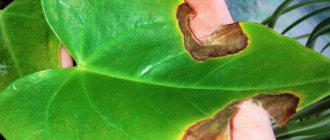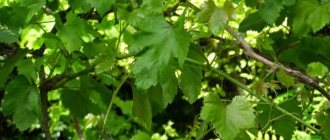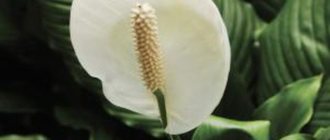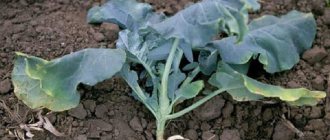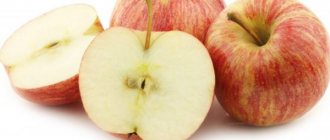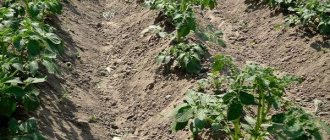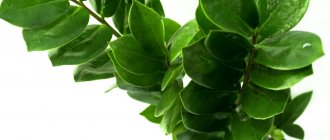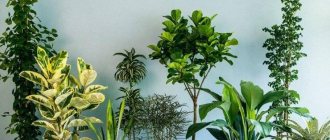The avocado has enjoyed considerable popularity in recent years as a houseplant because it is quite easy to grow from an ordinary seed. But in its natural habitat, the avocado has the appearance of a huge tree and is not particularly enthusiastic about living in a room. Therefore, many lovers of growing tropical trees are faced with the fact that avocado leaves dry out or unsightly spots are found on them, and soon the plants may even be left with a bare stem. All possible causes of this phenomenon, as well as ways to eliminate them, will be listed below.
Why do avocado leaves dry out?
At home, avocado leaves dry out and turn black due to many different reasons. And the most basic and common reason is the discrepancy between the conditions of avocado plants and what they require for normal growth and development. It often happens that people apply their own stereotypes and thoughts to plants about how and what needs to be done with them so that they feel good. But this does not always correspond to the true needs of the plant itself.
Finally, all plants, like people, are also susceptible to disease and parasite attacks. And those of them whose immunity was weakened by inappropriate care, even more than others.
Therefore, the most important thing is to initially try to create the most suitable conditions for avocados and carry out various preventive measures than to deal with the consequences in the form of diseases and ailments.
Botanical description
Avocado belongs to the Laurel family and belongs to the genus Perseus, and has a branched straight trunk. It is an evergreen fruit tree whose height varies from 10 to 20 meters.
The tree blooms with characteristic light green small flowers; after flowering ends, pear-shaped fruits begin to ripen.
Avocado has elliptical leaves. There are about 400 plant species around the world. Fruits of different varieties may differ in the type of peel, shape and even size. The main type of avocado sold on world markets is the “American Persea”; it has a characteristic pear-shaped shape and pimply dark green skin.
Unsuitable growing conditions
The main problem when trying to grow tropical or subtropical plants at home is the discrepancy between natural and indoor conditions. Indeed, in nature, these plants are adapted to a very specific combination of temperatures, humidity and amount of sunlight. In addition, avocados, being quite large trees, form a considerable root system, which requires very spacious containers. Not every home has room for large and deep pots. Avocados are also distinguished by their intensive growth rates, especially in the first years. This must also be taken into account when growing this tropical exotic.
So, the first and most common reason why avocado leaves dry, turn black and fall off is an unsuitable container for planting. The pot may not be too large in width, but it must be deep, like for palm trees. After all, from the very first months of life, the avocado root begins to purposefully grow downwards. The main stem also quickly begins to develop upward. As soon as the root reaches the bottom of the pot, it will have nowhere to develop and will begin to bend to the sides. As a result, the leaves will begin to dry out and fall off. In principle, there is nothing wrong with this, since in their place, with appropriate care, new leaves will immediately begin to form. But you will have to come to terms with the fact that for some time the avocado will not look entirely decorative.
Attention! If you look closely, the rudiments of new leaves appear in the axils of the buds even when the old leaves dry out.
Therefore, when replanting in the first year, it is better to prepare a narrow but deep pot. And subsequently increase its depth every year by 10-15 cm.
Avocados do not like either extreme heat or frost. Optimal conditions for growth are around + 18-20 °C. In winter, it is desirable to reduce the temperature while simultaneously increasing daylight hours and its intensity. After all, avocado leaves dry around the edges mainly due to low air humidity combined with high temperatures around. It is necessary to either increase the air humidity or lower its temperature.
And from a lack of light, which is not uncommon in winter, avocado leaves may turn pale, lose their bright and juicy color, and brown spots may even appear on them. Moreover, in natural conditions, avocados grow in bright sun, and they need to bask in its rays at least a few hours a day.
How do temperatures affect the plant?
A plant can also become sick if the temperature is incorrectly selected.
If you don't pamper the avocado with heat , the leaves will shrink. They will curl, but are unlikely to turn yellow. Perhaps their color will become darker. This position of the leaves is a sign of the “near-death” state of the avocado. In cold weather, growth slows down and the life of the plant gradually fades away.
Even if the leaves have already curled, the avocado can still be saved. To do this, you need to adjust the temperature in the room so that it is optimal (at least fifteen degrees). You should not try to heat the plant as much as possible, because it will suffer greatly from a sharp drop. It is better to increase the temperature gradually.
Too high temperatures also have a negative effect on avocados. Especially if the air is dry. Heat is a provocateur of yellowing of leaves and their dryness. It makes them stiffer and smaller in size, that is, they shrink.
The best method of resuscitation is a gradual decrease in temperature and moderate watering. Do not try to flood the soil if the temperature is not reduced - you will achieve the opposite effect.
Improper care
For avocados, not only timely and adequate watering is very important, but also the quality of the water used. Water for irrigation should be taken purified (filtered) without excess salts and only at a temperature above room temperature. Watering with cold water can cause leaves to dry out and turn black. And the amount of water used for irrigation depends greatly on lighting and ambient temperature. In summer, at high temperatures, the soil in the avocado pot should hardly dry out. It is permissible for only the topmost layer of 2-3 cm to dry out. But in winter, when kept in conditions of low temperatures, watering can be significantly reduced. But if it is not possible to reduce the temperature in winter, then watering should be quite abundant, a little less than in summer. But if you overdo it with watering, the avocado leaves also turn black. After all, in winter much less light falls on them, which means that the need for water also decreases.
In winter, it is better to pay more attention to increasing the humidity of the surrounding air, rather than the soil in the pot. To do this, you can spray the crown with warm water several times a day or place sphagnum moss in a tray, constantly moistening it. A good option is to place a group of plants with similar humidity requirements together and close to a humidifier.
Advice! In winter, avocados can benefit from additional lighting, as do many other tropical plants. It is advisable that daylight hours last for at least 12 hours.
All these attempts to correct the situation do not always lead to the desired result, and the leaves of the avocado may continue to dry out and turn black. Sometimes untimely and incorrect transplantation leads to this result.
The plant must be replanted very carefully, trying to completely preserve the earthen ball on the roots. The soil to be added to the pot is prepared from equal parts of humus, garden soil and sand; it is advisable to add sphagnum. Peat is not very desirable since avocado does not tolerate acidic soils and it is very easy to add too much.
The procedure should be timed to coincide with the spring period, when all processes occur much faster. But it happens that everything was done correctly, but the leaves still could not be saved. If this happened as a result of a transplant, then do not despair. It is necessary to regularly (1-2 times a week) spray the bare trunk with Epin or another immunostimulant, and the leaves will soon reappear, greener and more beautiful than before.
In order for the avocado to gain strength for the formation and growth of new leaves, it must be additionally fed at such moments. But there may also be some danger in feeding. After all, there is relatively little soil in the pot for the tree’s voluminous root system, and concentrated fertilizers can simply burn its thin young roots. Therefore, you can use any complex fertilizers for indoor or decorative foliage plants for feeding, but it is better to dilute them at half the concentration specified in the instructions. It is optimal to repeat the feeding procedure after a week or two.
Something that needs attention
Many of these diseases progress extremely quickly. Therefore, pay due attention to the plant
to avoid harmful consequences.
The sooner the problem is identified, the better the measures taken will help.
If you find an error, please select a piece of text and press Ctrl+Enter
.
Avocado dries out if transplanted incorrectly
. In this case, we are talking about transplantation with a complete replacement of the soil, as a result of which the small roots of the root system of the flower are disrupted. They participate in the process of water absorption. The plant is replanted with a complete replacement of the substrate only if the latter is not suitable or a lot of salts have accumulated in it from watering with hard water. In all other cases, the plant is transferred from a slightly larger pot (the diameter of the pot should be 2-3 cm larger than the previous one).
If an avocado has been transplanted and its leaves are drying, proceed according to the following scheme: the plant is covered with a greenhouse. This can be an ordinary plastic bag, but it should not touch the leaves. A high level of air humidity is maintained under the greenhouse by spraying. Reduce watering to a minimum, since the soil under the greenhouse dries out slowly. Do not place the plant in direct sunlight, otherwise the leaves under the polyethylene will get burned. The greenhouse is ventilated every day for a few minutes. It is recommended to add epin to the water for spraying once a week.
Read also: How to cook food from potatoes
The leaves dry out if the avocado is overwatered.
The plant does not like dry soil, but overwatering is also detrimental to it. Before the next watering, the substrate in the pot should dry out by 3-5 cm, depending on the volume of soil. Otherwise, the roots begin to rot. If the soil in a pot with an avocado is constantly wet, you need to remove the earthen lump from the bowl without disturbing its integrity, wrap it in newsprint and place the plant under diffused light. This way the soil will dry out quickly and excess moisture will go away. The roots are inspected for rot. If there are rotten roots, they are carefully cut off, but try not to disturb the integrity of the earthen clod. The avocado is returned to the pot. Reduce watering, water with root solution once a week. Pay great attention to spraying, possibly with Epin.
Why do avocado leaves dry out if the watering regime is normal?
This may occur due to lack of light or hypothermia of the plant. Avocado loves a lot of diffused light, and therefore it is placed near windows on the south side of the house, which have light tulle or slight shading. If there is not enough light, the avocado dries out. What to do? Move to a bright place, but without direct sunlight, spray generously.
If the plant is caught in a draft or has been frozen and begins to dry out, it is necessary to normalize the temperature, ensure a normal level of light, and be sure to place the flower under a greenhouse, as described above.
Avocado diseases
Under favorable conditions, avocados are rarely affected by various diseases and parasites. But with a decrease in immunity when kept in conditions that are not most suitable for it, the plant may be subject to attack by pests and diseases.
The most common diseases in indoor conditions, which arise primarily from improper watering regimes, are various fungal infections.
Powdery mildew appears as a whitish coating on the leaves. Moreover, the lower leaves of an avocado in a pot are the first to dry, turn yellow and fall off. And new leaves initially grow with various kinds of deformations. The disease can quickly spread to neighboring plants, so the diseased specimen must be isolated from others as quickly as possible.
To cope with powdery mildew, the leaves are completely removed and burned. The upper part of the soil is replaced with fresh soil, and the leaves and branches themselves are sprayed with a solution of soap and soda or potassium permanganate. You can also spill and spray the avocado with one of the fungicides: Strobi, Topaz, Tiovitjet.
An equally dangerous problem is the defeat of avocados by root rot and late blight. The first disease most often appears due to poor drainage and waterlogging of the soil. Phytophthora is easily transported using water, tools, and clothing. Both of these diseases affect, first of all, the condition of avocado leaves. They dry, turn black, and become covered with spots of different shades and configurations.
Double treatment of the soil and all green parts of the plant with fungicides Ridomil-Gold or Fitolavin will help cope with diseases.
Pests
In indoor conditions with increased dry air, almost all plants can be attacked by spider mites. If the tips of the leaves of an avocado dry out and at first a barely noticeable mottling appears on them, then the first thing you need to do is check their back side with a magnifying glass for the presence of small black dots.
With significant damage to plants on the leaves, you can even see the smallest cobwebs with which their cuttings are covered. If there are few pests, then simply washing the leaves with warm water and potassium soap will help remove them. When cobwebs appear, avocados should be sprayed with Fitoverm, Vermitek or Actofit at least 2-3 times with an interval between treatments of 4-5 days.
Scale insects are a frequent guest on avocados. These tiny pests live primarily on plant stems or on the lower veins of leaves. They suck the juice from the green part of the avocado, causing the leaves to turn yellow and dry out. Scale insects can be removed manually using a solution with tar soap.
How do temperatures affect the plant?
A plant can also become sick if the temperature is incorrectly selected.
If you don’t pamper the avocado with heat
, the leaves are shriveled. They will curl, but are unlikely to turn yellow. Perhaps their color will become darker. This position of the leaves is a sign of the “near-death” state of the avocado. In cold weather, growth slows down and the life of the plant gradually fades away.
Even if the leaves have already curled, the avocado can still be saved. To do this, you need to adjust the temperature in the room so that it is optimal (at least fifteen degrees). You should not try to heat the plant as much as possible, because it will suffer greatly from a sharp drop. It is better to increase the temperature gradually.
Do not place thermal appliances near the avocado under any circumstances. Even if you use them to warm the room, keep them away from the plant.
Temperatures too high
also do not have the best effect on avocados. Especially if the air is dry. Heat is a provocateur of yellowing of leaves and their dryness. It makes them stiffer and smaller in size, that is, they shrink.
Best method of resuscitation
– gradual decrease in temperature and moderate watering. Do not try to flood the soil if the temperature is not reduced - you will achieve the opposite effect.
Avocados are often attacked by two pests - scale insects and spider mites.
. They have the same action.
In order to destroy scale insects
soap solution is effective. You need to dissolve tar soap in water and clean the leaves with the mixture.
To combat spider mites
avermecatins are required. These drugs include Vermitec and Actofit.
Preventive actions
The most basic preventive measure for keeping avocados healthy is placing the plant in the most favorable conditions for its development. This:
- plenty of sunlight and 12 hours of daylight;
- moderately warm temperatures throughout the year;
- moderately abundant watering with warm purified water;
- sufficient air humidity.
The latter conditions are especially important for the prevention of pests and diseases.

